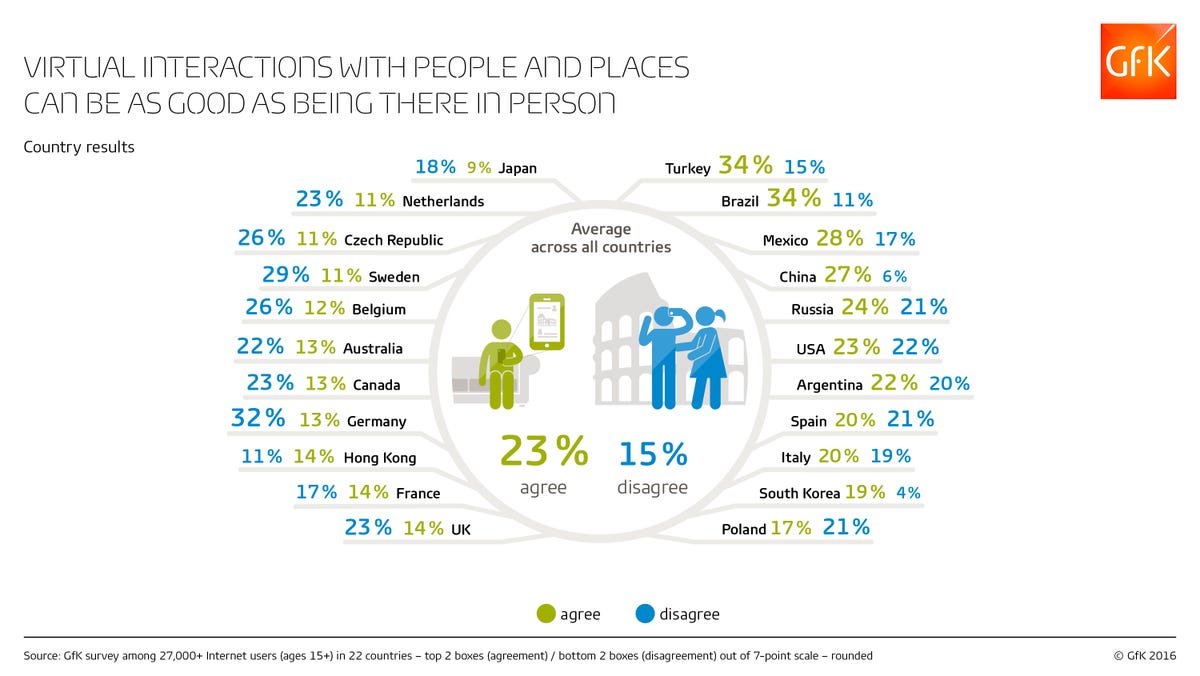Think phones are a big part of your digital life? Virtual reality and augmented reality will be even bigger, a key player in the tech industry predicts.
“It’s going to be huge… It has the opportunity to eclipse the smartphone market,” said Clive Downie, chief marketing officer of Unity Technologies, whose software is used to build thousands of games on phones, personal computers and game consoles. VR and AR will be the next in a series of technologies — electricity, radio, movies, TV, smartphones — that profoundly change everything we do, he said.
Virtual reality presents a computer-generated 3D world to people wearing special goggles that track head motion to offer an immersive artificial realm. Augmented reality is related, but adds a virtual layer atop a view of the real world. Both require you to buy high-powered, expensive computing equipment and burden your head with awkward gear, but computing giants like Google, Facebook, Samsung and Microsoft are scrambling to improve the technology so they’ll be at the center of the next stage of digital living.
Unity is the latest to weigh in on the excitement over virtual and augmented reality. While the tech industry thinks it’s the next big trend, consumers and skeptics aren’t yet convinced. A global survey of 27,000 people found only 23 percent felt that virtual interactions with people and places can be as good as being there in person, while 15 percent disagreed. In some countries — the UK, France, Japan, Canada and Germany — the skeptics outweigh the believers.


Worldwide, only 23 percent of people are convinced virtual reality is as good as the real thing, according to a survey by analyst firm GfK.
GfK
But when Unity talks, you should listen. Thousands of programmers use its tools, and Unity-run games are downloaded about 33 million times a day on phones. It’s investing heavily in VR and AR, with support for high-profile devices like Samsung’s Gear VR and Facebook’s Oculus Rift. On Tuesday, at the Game Developers Conference in San Francisco, Unity is announcing that its built-in support for Microsoft’s HoloLens will arrive on March 30, the same day that developer versions of HoloLens start shipping.
All this work is important to pave the way for VR and AR. Even though Downie is bullish about the technology, he also warns that “there’s going to be a gap of disappointment” that stands between today’s breathless excitement and the day when VR and AR actually fulfill their promise.
Translation: Beware the hype.
VR and AR will be for gaming first, but eventually will spread far beyond that, Downie said, touching upon training, education, virtual travel and just hanging out with our fellow humans. “It’ll add another very significant twist to social media and how people interact with each other,” including virtual meetings and collaboration at work, he said.



